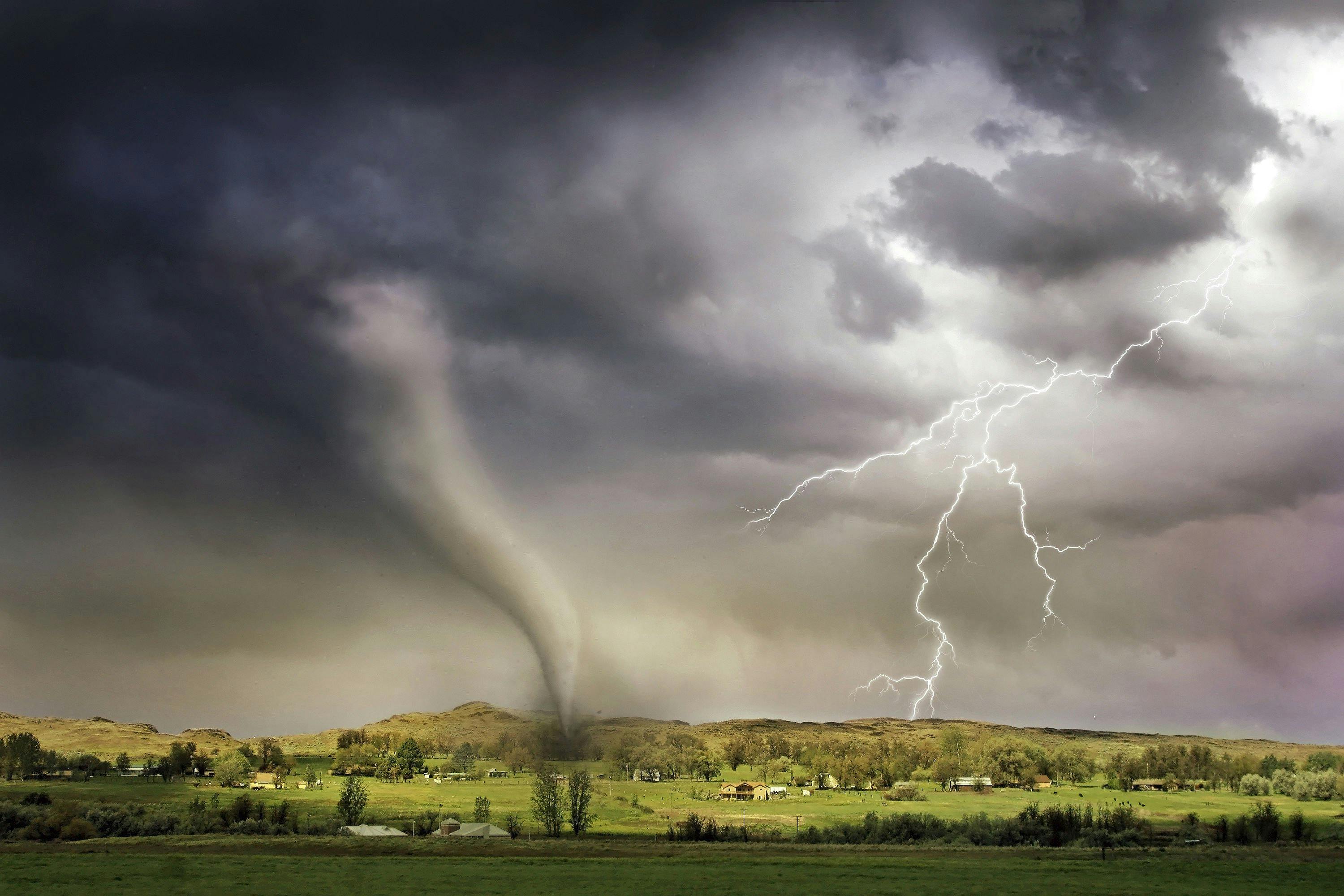Understanding tornado-induced connectivity disruptions is crucial post-storm. Prioritizing restoration efforts is key to ensuring public safety.
Connectivity Rescue Guide: Staying Linked During Storms
Tornadoes can violently disrupt our lives, swiftly severing the lifelines of connectivity we often take for granted.
Understanding tornado-induced connectivity disruptions is crucial post-storm. Prioritizing restoration efforts is key to ensuring public safety.
During such storms, staying informed becomes a critical challenge as the reliability of phones, internet, and TV services are put to the test.
Understanding Tornado-Induced Connectivity Disruptions
Tornadoes wield the power to damage critical infrastructure, leading to immediate outages in communications networks. This can hinder emergency services and vital news updates.
As these fierce storms surge, disruptions occur when power lines, cell towers, and cable systems sustain damage or are destroyed, breaking the link that keeps us connected to the world. These interruptions can persist for extended periods, depending on the severity of the damage and the accessibility of the affected areas.
Restoration efforts post-tornado are complex and priorities focus on restoring critical services first to ensure public safety and communication continuity.
Impact on Communication Infrastructure
Tornadoes can demolish the very backbone of our connectivity, tearing apart the networks we rely upon.
In the wake of destruction, even the most robust communication systems are vulnerable to the ferocious power of tornadoes.
The resilience of infrastructure varies, with some networks weathering the storm better due to advanced engineering, redundant pathways, and swift response teams.
However, no system is immune—crucial conduits for data and voice transmission face the threat of tornadoes, affecting access to essential information and services.
Challenges in Maintaining Power for Connectivity
During a tornado, utility poles are prone to damage or destruction, cutting off the electricity needed to power communication networks. This disrupts service for phones, internet, and cable TV, leaving many individuals disconnected.
Backup generators often become the lifeline of connectivity during power outages.
However, these generators rely on fuel, which can be scarce during widespread disasters, calling for strategic planning and logistics.
Maintaining a consistent power supply is critical to ensure communication channels remain operational, especially during emergency situations where information is crucial.
Communication providers may deploy mobile cell towers and Wi-Fi hotspots to restore services quickly, but these too require power and can be hampered by fuel shortages or logistical challenges.
Ultimately, the goal is to minimize downtime and restore users' ability to communicate as swiftly as possible. Companies often have contingency plans, including emergency protocols and disaster recovery strategies to tackle such events.
Staying Connected During Tornadoes
In the face of a tornado, connectivity becomes a vital lifeline, enabling access to emergency alerts and critical updates. Wireless carriers often ramp up their response, deploying portable cell sites and emergency teams.
To bolster resilience against tornadic disruptions, telecom providers are enhancing their infrastructure with reinforced cell towers and backup power systems. Customers are encouraged to utilize texting over calling to conserve bandwidth and facilitate communication throughput during peak demand.
Amidst the chaos, satellite technology often proves robust, offering an alternative path for maintaining contact when terrestrial networks falter. Providers like HughesNet and Viasat may offer increased resilience in rural or impacted areas.
Emergency Communication Tools
Communication is paramount during severe weather.
Advanced planning for disaster scenarios is essential. Mobile carriers and internet service providers (ISPs) reinforce their networks with diverse and resilient technologies, ensuring persistent service continuity. Thus, it's critical to be familiar with the various emergency communication tools available. Indeed, readiness equates to resilience when confronting the unpredictable nature of tornadoes and their impact on connectivity.
Shortwave radios remain a reliable standby.
Next-generation satellite communication is advancing. Services like Iridium and Globalstar offer satellite phones that function independently of terrestrial infrastructures—innovational choices that can be literal lifelines during extensive network outages.
Providers prioritize emergency preparedness. Companies such as AT&T, Verizon, and Comcast have comprehensive plans to quickly restore services post-disaster, boasting investments in hardened sites and deployable network assets as of early 2023. They ensure customer outreach through mobile alerts, providing real-time information and resources to keep users connected even as the storm rages on.
Preparing Tech Devices for Outages
Charge devices to full capacity before storms hit.
Preparation can range from simple to intricate approaches. From battery-powered chargers to uninterruptible power supply (UPS) systems, devices must be readied to endure prolonged periods without power. Significantly, securing these power backups is as vital as having the devices themselves.
Keep backup batteries on hand.
A generator can be a lifeline for power. It can sustain home connectivity and charge multiple devices, providing a bridge until normal power is resumed—an essential strategy for maintaining a semblance of normalcy during power outages.
Cloud storage safeguards important documents. With services like Google Drive and Dropbox, critical data can be accessed from any device, ensuring that key information remains available, even if local servers are compromised during severe weather events.
Service Provider Responses to Extreme Weather
In the face of extreme weather conditions such as tornadoes and hurricanes, service providers adopt robust emergency response strategies to mitigate disruptions. They deploy mobile cell sites and generators to maintain service, and are swift to repair damaged infrastructure. Certain providers offer crisis response teams who focus on rapidly restoring connectivity. For instance, some may waive fees for late payments and data overages temporarily, underscoring a commitment to maintaining communication channels during critical times. Providers also frequently collaborate with emergency services, ensuring that first responders have the uninterrupted connectivity they need to coordinate relief and rescue efforts effectively.
Network Resiliency Strategies
To safeguard connectivity, providers implement sophisticated network resiliency strategies.
- Redundant Infrastructure: Establishing multiple pathways for data to ensure service continuity if one line is compromised.
- Pre-Deployed Equipment: Storing mobile cell sites and generators near vulnerable areas for quick deployment during disruptions.
- Real-Time Monitoring: Utilizing advanced technology to monitor network performance and pinpoint areas affected by outages instantly.
- Rapid Response Teams: Equipping on-the-ground personnel with the tools needed for swift infrastructure repair and restoration.
- Diverse Energy Sources: Investing in alternative sources like solar and wind to power networks if traditional sources fail.
These strategies are bolstered by constant innovation and adaptation to emerging challenges.
Through strategic placement and careful monitoring, providers work to minimize the impact of severe weather on connectivity services.
Customer Support and Backup Solutions
Emergency situations often challenge the robustness of customer support systems. Providers recognize the importance of maintaining open lines of communication with customers during weather-induced outages.
In response, they amplify their customer service capabilities during storms, enabling extended hours for support centers and deploying additional personnel. These efforts are vital for guiding customers through troubleshooting, updating them on service restoration efforts, and addressing any safety concerns. This proactive stance ensures clients are not left in the dark when it comes to the status of their service.
Furthermore, some providers offer enhanced backup solutions as part of their preparedness plan. Battery backups and portable generators become critical, ensuring that even when the grid falters, customers can maintain a basic level of connectivity for their most essential communication needs.
Persevering through the storm, the best providers not only reinforce their infrastructure but also their commitment to customers. Through measures such as bill crediting for service downtime and proactive communication channels, they strive to alleviate some of the stress that comes with severe weather events. These actions display an understanding that a reliable connection can be as crucial as any emergency service during times of crises.
Advancements in Weather-Proof Connectivity
In anticipation of fierce weather patterns, the communications industry has made significant strides in enhancing the resilience of their networks. Providers have been diligently upgrading infrastructure with sturdier materials and more fail-safes. For instance, a notable advancement is the increased deployment of fiber-optic cables, which are less susceptible to water damage and offer superior performance, maintaining higher bandwidth during and after inclement weather conditions.
Furthermore, the push for innovation has led to the development of smart networks that can adapt in real-time to changing conditions, which we might liken to a "digital immune system". These networks are fortified by AI-driven predictive analytics and automated redirecting of data flows. In practice, this means that during a major weather event like a tornado, the system is capable of preemptively rerouting traffic to maintain uninterrupted service. These advancements represent significant steps towards a future where connectivity can withstand the harshest of elements.
Cutting-Edge Hardware for Harsh Conditions
In anticipation of extreme weather, telecommunications infrastructure is hardened with advanced engineering solutions. Telecommunication towers are built to withstand high winds and reinforced with materials that improve their resilience against the sheer force of tornadoes.
On the ground level, waterproof and weatherproof casings are deployed to shield critical equipment from moisture infiltration and flying debris. This hardened exterior combines with enhanced anchorage systems, ensuring equipment remains operational and anchored firmly in place despite the ferocious winds and potentially catastrophic impact from tornado-driven debris.
Inside homes and businesses, modems and routers now come equipped with backup power options such as batteries or generators. This allows for a modicum of connectivity to persist even when the primary power source is disrupted by a tornado or another severe weather event.
Providers continually invest in redundant network paths that come into play during emergencies, creating multiple routes for data transmission. This reduces the likelihood of a single point of failure and helps maintain connectivity. Contacting customer support ahead of a known threat can provide subscribers with information on the positioning of mobile cell towers, and other preemptive measures taken to ensure continuity of service during adverse weather conditions.
Software Innovations for Uninterrupted Access
In the dynamic landscape of connectivity, software advancements are our silent guardians against the tempest's rage. Predictive algorithms now monitor weather patterns, giving providers a chance to proactively reroute traffic and prevent service interruptions.
The development of mesh networks provides a resilient web of connections. When one node goes down, others can seamlessly take over, ensuring uninterrupted access to vital information. Combining this with edge computing, which processes data closer to its source, we can mitigate latency and outages, even when central servers are affected.
Moreover, automated failover systems are swiftly becoming standard. They instantly switch users to secondary networks, maintaining the lifeline of communication critical during natural disasters. The integration of AI and machine learning into these systems further refines their response to fluctuating connectivity, bolstering reliability.
Not to be overlooked, customer-focused software solutions by service providers, such as personalized alert systems and digital assistant support, enhance the user experience. These platforms provide real-time updates on service status, tips for optimizing connection quality, and immediate assistance. Such innovation not only bolsters community resilience but also signifies a commitment to keeping users connected no matter the weather.
Ensuring Connectivity During Bad Weather
When severe weather strikes, it's essential to take proactive steps to ensure your connectivity remains intact. Here are some tips to help you stay connected during and after bad weather:
- Charge your devices: Before the storm hits, make sure all your devices, such as smartphones, tablets, and laptops, are fully charged. This will give you a longer-lasting battery life during potential power outages.
- Invest in backup power: Consider purchasing a portable charger or a power bank to keep your devices charged when the electricity goes out. Alternatively, you can also invest in an uninterruptible power supply (UPS) system that can provide backup power for your internet modem and router.
- Secure alternative internet options: Explore alternative internet options to ensure you have a backup plan. For example, you can use your smartphone's mobile hotspot feature to connect your devices to the internet. You can also consider satellite internet providers like HughesNet and Viasat, which may offer better resilience in rural or heavily impacted areas.
- Store important files in the cloud: To protect your important documents and data, utilize cloud storage services like Google Drive or Dropbox. By storing your files in the cloud, you can access them from any device, even if your local servers are compromised during severe weather events.
- Stay updated with emergency alerts: Install weather apps or enable emergency alerts on your mobile devices to stay informed about any severe weather warnings in your area. These alerts can provide critical updates and instructions to help you navigate the storm safely.
Restoring Connectivity After Bad Weather
Re-establishing connectivity after bad weather is equally crucial. Here are some steps you can take to restore your connectivity:
- Contact your service provider: Report any service disruptions to your internet service provider or cable company as soon as it is safe to do so. They can provide you with information on any known outages in your area and guide you on the estimated restoration time.
- Reset your modem and router: If you are experiencing connectivity issues, try resetting your modem and router by turning them off, waiting for a few minutes, and then turning them back on. This simple step can often resolve minor connectivity problems.
- Check for physical damage: Inspect your home's external connections, such as cables and wires, for any signs of damage caused by the bad weather. If you notice any visible damage, contact your service provider or a professional technician for assistance.
- Stay patient: In the aftermath of severe weather events, service providers prioritize restoring connectivity to affected areas. While it may take some time for services to be fully restored, be patient and understand that providers are working diligently to resume normal operations.
By following these tips and being prepared, you can ensure that your connectivity remains intact during bad weather and can take the necessary steps to restore your connection afterward. Remember, staying connected allows you to access emergency updates, critical information, and stay in touch with your loved ones, providing you with a sense of security during challenging times.
During an emergency situation when you lose connectivity, it's important to stay calm and take immediate action to ensure your safety and access to critical information. Here are some steps to follow:
- Assess the situation: Determine the extent of the emergency and any potential risks or hazards in your immediate surroundings. If necessary, prioritize your safety by following evacuation protocols or seeking shelter.
- Use alternative communication methods: If your internet or phone service is disrupted, try using alternative communication methods. Use your cell phone to send text messages instead of making phone calls, as texts can often go through even in areas with limited connectivity. Alternatively, if you have access to a landline phone, use it to make emergency calls.
- Seek information from local authorities: Stay tuned to local news stations or emergency radio broadcasts for updates on the situation and any instructions from authorities. In some emergency situations, authorities may set up dedicated hotlines or text messaging services to provide important updates.
- Utilize public Wi-Fi hotspots: If you're unable to connect through your home network, consider finding public Wi-Fi hotspots in your area. Libraries, cafes, and community centers may offer free Wi-Fi access during emergencies. However, use caution when connecting to public networks and avoid accessing sensitive information.
- Stay prepared with offline resources: Keep important emergency contact numbers, maps, and other essential information in a physical format, such as a printed copy or written down on paper. This ensures you can access critical information even without internet or phone connectivity.
- Utilize local resources: Reach out to local emergency services or community organizations for assistance. They may provide resources, information, or support during times of crisis. Additionally, neighbors or community members might be able to offer help or valuable information.
- Stay connected with friends and family: If you're unable to connect through your primary communication channels, try to reach out to friends or family members who may have access to a working internet or phone connection. Use social media platforms or messaging apps to let them know your situation and stay in touch with them until your connectivity is restored.
Remember, each emergency situation is unique, and it's important to follow the instructions and guidelines provided by local authorities. Stay informed, stay safe, and prioritize your well-being and the safety of those around you.
- AT&T: AT&T has comprehensive plans in place to quickly restore services post-disaster. They invest in hardened sites and deployable network assets. They ensure customer outreach through mobile alerts, providing real-time information and resources to keep users connected even during severe weather events.
- Verizon: Verizon is committed to maintaining communication channels during critical times. They frequently collaborate with emergency services to ensure first responders have uninterrupted connectivity. Verizon may waive fees for late payments and data overages temporarily, showing their dedication to their customers.
- Comcast: Comcast also has comprehensive plans to quickly restore services after severe weather events. They invest in hardened sites and deployable network assets. They strive to keep their customers informed by providing real-time information and resources through mobile alerts.
- HughesNet and Viasat: These satellite internet providers may offer increased resilience in rural or heavily impacted areas. Satellite technology often proves robust during severe weather, providing an alternative path for maintaining contact when terrestrial networks falter.
These are just a few examples of providers and the measures they take to help those affected by storms or severe weather events. It is important to check with individual providers for specific information on their response strategies and assistance programs during such situations.
In conclusion, staying connected during storms and severe weather events is crucial for accessing emergency information, maintaining communication with loved ones, and navigating through challenging times. Connectivity can be disrupted due to damage to communication infrastructure and power outages caused by tornadoes and other extreme weather conditions. However, both telecommunications providers and individuals can take proactive steps to ensure connectivity and restore services after such events.
Telecommunication providers implement various strategies to safeguard connectivity, including redundant infrastructure, pre-deployed equipment, real-time monitoring, rapid response teams, and diverse energy sources. They also prioritize customer support and backup solutions to maintain open lines of communication with customers during outages. Additionally, providers collaborate with emergency services and offer crisis response teams to ensure uninterrupted connectivity for first responders.
On an individual level, preparing tech devices for outages, securing alternative internet options, storing important files in the cloud, and staying updated with emergency alerts are essential steps to maintain connectivity during bad weather. After a storm, contacting your service provider, resetting your modem and router, checking for physical damage, and being patient during the restoration process can help restore connectivity.
The communications industry has made significant advancements in weather-proof connectivity, such as deploying fiber-optic cables and utilizing software innovations like predictive algorithms, mesh networks, edge computing, and automated failover systems. These advancements enhance network resilience and ensure uninterrupted access to vital information during severe weather events.
Ultimately, ensuring connectivity during bad weather requires a combination of preparedness, proactive measures, and collaboration between individuals and telecommunications providers. By following the tips and strategies outlined in this guide, individuals can stay connected, access critical information, and maintain a sense of security during times of crises. Together, we can overcome the challenges presented by storms and severe weather, and stay linked to the world even in the face of adversity.









